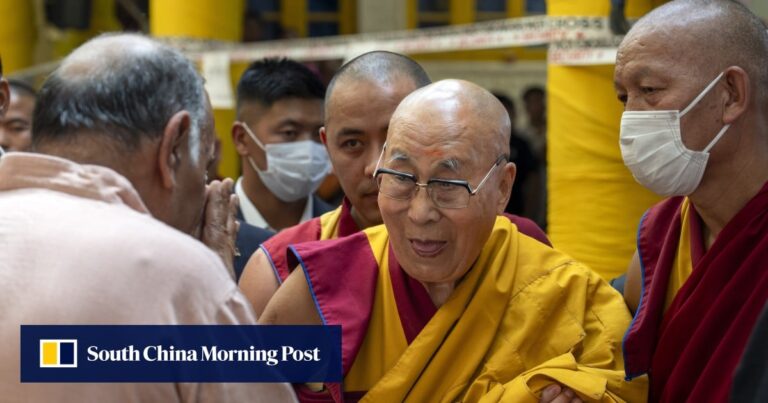“Though the Dalai Lama is now outside China, his reincarnation is still part of the Gelug tradition and most of the temples are inside China, so it falls under the jurisdiction of the Chinese government,” Laksyanja said, referring to the Dalai Lama’s Gelug sect, also known as the “Yellow Hats,” in exile.
“So the Chinese government [the 2007] A system will be established and these principles will be applied to ensure control over Tibetan Buddhism.”
Laksyanja also said his field research had revealed that the Tibetan public did not have much respect for the 14th Dalai Lama – “they became more aware of his political identity and political movements abroad” – but acknowledged that his 13 ancestors had made significant contributions to the development of Tibetan Buddhism.
Tibetans view the Dalai Lama as a living incarnation of Buddha. The current Dalai Lama turns 89 this week and has indicated he plans to speak out about the issue of his reincarnation when he turns 90.
He has previously proposed abolishing the reincarnation of the Dalai Lama but said Beijing should have no say in this, as it insists the process must follow Chinese law.
The Chinese government has blamed him for past unrest among Tibetans in China in the 1980s and 2008, and there have long been fears that his death could spark new such social tensions.
Experts at a forum in Beijing on Thursday also criticised the Dalai Lama for a lack of communication with Beijing.
“There has been no progress in this regard for many years because the Dalai Lama himself does not understand or implement the central government’s demands. Instead, he is trying to achieve independence, semi-independence or de facto independence for Tibet through negotiations,” said Zhang Shigao, director of the Institute of Contemporary Tibet at the China Center for Tibet Studies.
The panelists also argued that Beijing’s use of the name “Xizang” instead of “Tibet” in English-language articles is a way of asserting its sovereignty over the autonomous region on China’s western border.
“Xizang” is the Chinese pinyin, or romanization, of the word for “Tibet.”
Liang Junyan, a researcher at the CTRC, said the term “Tibet” had taken on “more political connotations” and that Beijing had the “right to modify the name to avoid ambiguity.”
Liang said the name “Tibet” is geographically broad, inaccurate and misleading, and that the Tibetan language is spoken not only in the autonomous region but also in neighboring provinces such as Sichuan, Yunnan, Qinghai and Gansu, he argued.
Thursday’s forum, aimed at discussing 65 years of reform in Tibet, was well attended by Chinese and international media.
Liang also pointed to several bills in the US Congress related to Tibet as the basis for Beijing’s adoption of the term “Xizang.”
Many Tibet policy bills passed by the US in recent years have referred to the region as “Greater Tibet”, a term long advocated by the 14th Dalai Lama and which Beijing changed to avoid misunderstandings, Liang said.
The Dalai Lama, a Nobel Peace Prize laureate, is seen by Beijing as a “separatist” who seeks independence for Tibet, a charge he denies.

A bipartisan delegation that included former House Speaker Nancy Pelosi said they would not allow China to influence the selection of the Dalai Lama’s successor and would pressure Beijing to resume talks with the Dalai Lama.
China’s Foreign Ministry responded by saying its policy was “consistent and clear” and that the Dalai Lama “must thoroughly reflect on and fully revise his political positions” in order to resume contact and consultations with Beijing.

